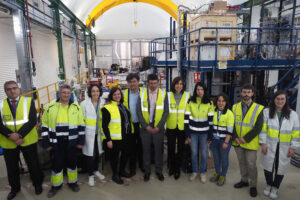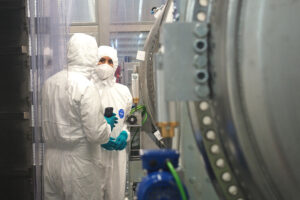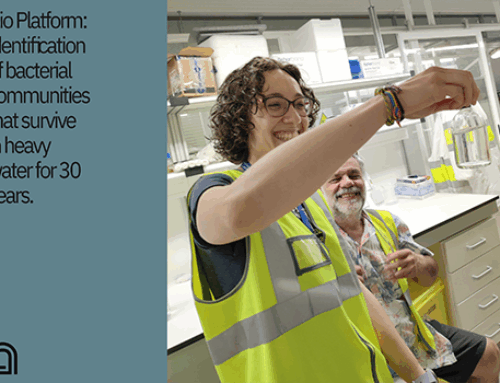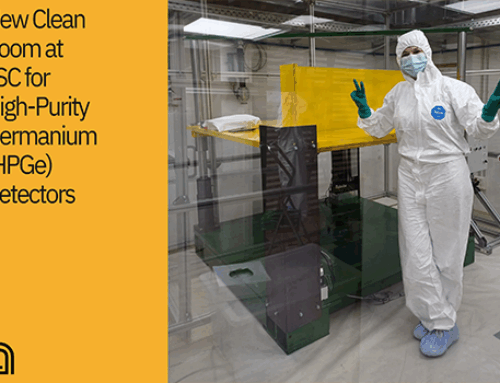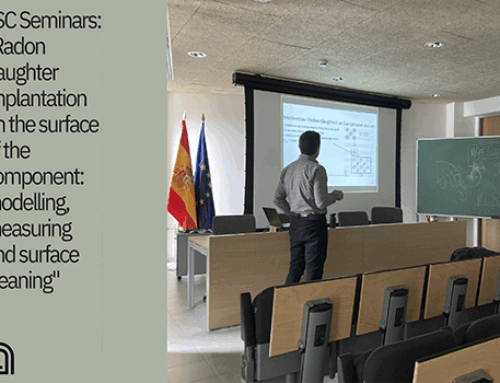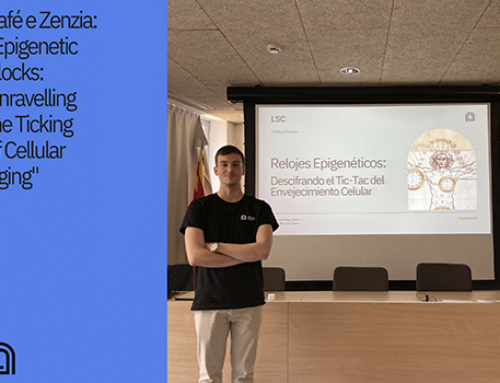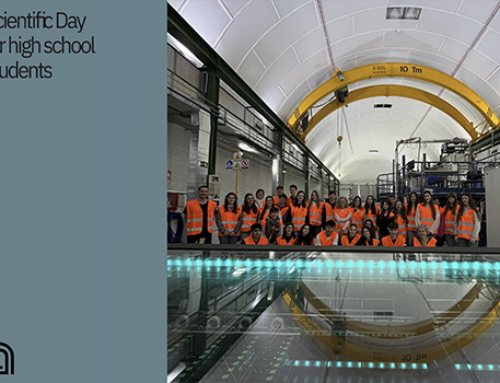Diana Morant Ripoll, Minister of Science and Innovation, visited the LSC facilities to see the progress of the Spanish contribution to the construction of the HyperKamiokande experiment and the underground construction of the NEXT-100 detector.
The international HyperKamiokande consortium, formed by more than 500 scientists from 20 countries, is building the largest neutrino telescope based on 260,000 tonnes of ultrapure water, with an important Spanish scientific and industrial contribution financed with MRR funds. The Spanish groups coordinated by the LSC, in collaboration with industry, are designing and validating the industrial production of the implosion chain-break protective covers for the light sensors (photomultiplier tubes), the data processing blocks and the geomagnetic compensation, ventilation and calibration systems. This new telescope will be used to investigate the origin of matter in the Universe and to observe the nuclear processes inside the stars. This project is allowing the Spanish companies which participate to become skilled in technological development and competitive for contracts in international projects.
The Spanish cover design, a steel structure produced by deep drawing and formed acrylic with high ultraviolet transparency, competed with the original Japanese design. This week, the international consortium has taken two important decisions in finalising the detector design:
- To select the Spanish technological design of the cover as the leading choice, a necessary condition for production approval of the design by Spanish industry.
- To choose the location of the dynamic chain implosion prevention tests in Palma, using the infrastructures of the ICTS SOCIB.
During May, the mechanical and optical characterisation of the Spanish design will be completed for approval by the consortium at the HyperKamiokande general meeting to be held in Japan in the last week of June.



